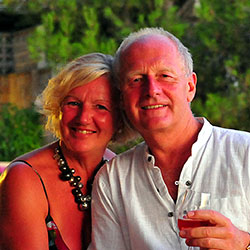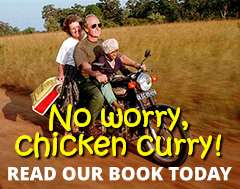Travels in happier times that we hope will return. Combine Intha, Taungyo, Pa-O (Taungthu), Danu, Kayah, Danaw and Bamar ethnicities and it alludes to the broad diversity of activities, crafts and lifestyles that you’ll encounter around this picturesque lake in central Myanmar.
Inle Lake is also one of the most picturesque and varied landscapes you’ll find in Myanmar, providing you with wonderful opportunities for photography around its colourful shores and inlets. Its people, crafts, produce and villages make it one of the ‘must see’ destinations in Myanmar.

The lake itself is the second largest in Myanmar with an average area of about 50 square miles, albeit it’s only about 7ft deep over most of its area in dry season, increasing by 5ft during the rains. It’s also one of the highest, at an elevation of 2,900 feet above sea level.
Most of the lake’s inhabitants are devout Buddhists, living in simple houses of wood and woven bamboo on stilts. The people are largely self-sufficient farmers and fishermen, taking full advantage of the fertile and plentiful resources of the lake and its surroundings.

We board our longtail boat in the middle of the small town of Nyaungshwe some three kilometres north of the lake. The only indication that we’ve come to the right place is the endless stream of high pitched diesel engines and longtail propeller shafts sending plumes of spray into the air, as the boats carrying tourist couples skim past us at high speed, simulating a scene from a James Bond movie.

Our boat nudges out into the narrow channel and we soon leave the town behind and enter an area of lush green floating vegetation. The banks of water hyacinth on either side give way to floating gardens beyond them, where a vast amount of vegetables are grown on the floating masses of vegetation that surround the lake.

 These floating areas are the principal agricultural sites of the lake and account for the main income and self-sufficiency of the lake dwellers.
These floating areas are the principal agricultural sites of the lake and account for the main income and self-sufficiency of the lake dwellers.
Although we’re spending a few days around Inle, we’re keen not to miss a thing and are constantly asking our boatman to stop or divert at every opportunity.
The weather in September Is variable and regular, daily, tropical storms are expected in the afternoons; so we want to take full advantage of the fine spells in between for photography and visiting the various sites and locations.

Immediately we come across the traditional Intha tribe fishermen, who have perfected the art of standing on one leg whilst rowing with the other; so that they have both hands free for casting and retrieving their fishing nets. Although this looks perfectly natural, we’re sure that it’s an highly accomplished practice that would have us in the water within minutes.
Almost gone are the Intha fishermen using their distinctive conical bamboo catch frames in favour of the more easily maintained and conventional woven nets – but nevertheless we do find one fisherman who is prepared to stay in one place for a small payment.

The villages around the lake can be differentiated in style between those who are ‘secure’ upon dry land and those who suspend themselves and their homes on stilts above the waters of the lake.
The style of each of the homes, however, vary little in that they are all singularly precariously built with rudimentary materials, wooden planking, bamboo and rush matting, with very few of them seeming substantial enough to withstand a really bad storm.
There are numerous cottage industries practiced around the lake – from cheroot making, lotus silk and cotton weaving and boat building, as well as cultivation and food manufacture.

We stop at a cheroot making facility which comprises a group of chatty women selecting files of tobacco to rapidly roll into tobacco leaves, insert filters, seal and label; in a process that seems to rival the speed of any automated machine.
These mini cigars are one of the principal products that are exported from the area.
Another is Lotus silk weaving. Personally, we were unaware that you could extract silk from Lotus plant stems but a well-practiced lady shows us how the stems are split and stretched to extract the fine sinews before these are twined together and dyed to form fine silk yarn for use in the weaving of valuable cloths. The building they work within is one of the most substantial we come across – presumably to prevent the looms from turning into submarines.

 Another weaving village is occupied by the distinctive Kayan tribal women who are notable for their extended necks.
Another weaving village is occupied by the distinctive Kayan tribal women who are notable for their extended necks.
This phenomenon is created by adding successive rings or coils of brass as the female child grows, so extending and stretching their vertebrae.
The reason for this has been largely lost in time but the result is both striking and distinctive. The solid metal rings themselves can weigh many kilograms, so we don’t envy them the practice.
En route by boat to a village market, we make a brief stop at a boat-building yard where the very longtail boat we’re travelling in would have been made.
Far from being crude ‘dugouts’ these craft are highly lacquered ten metre-long works of art that sell for many thousands of pounds, being hand crafted and finished from scratch.
We watch as craftsmen hand tool and sculpt the ribs and deck planks of the boats with a dexterity that is fast disappearing around the world. The final high gloss lacquer finish is also a highly skilled application that gives the boat the sheen, appeal and speed that will see its through its life.

Before reaching the market we visit a small warehouse that highlights just how much produce is grown around the lake; with huge piles of fresh green tomatoes filling the area from wall to wall, prior to boxing and shipping out to the surrounding areas.
Whereas the tomato packing is on a commercial scale, the Yethar village market that we find at the end of a tributary of the lake is very much a local event for the lake’s inhabitants.

Traditional costumes abound and cheerful haggling and banter are very much the norm. We just wander around or sit still to watch life go by and no one bothers us or pays us much attention, so intent are they on their trading.
Our guide employs a very engaging way of asking people, on my behalf, for permission to photograph them. He purchases a small item – perhaps a bag of nuts or sweets – from one trader and offers them to the next as a thank you for their compliance.
He then repeats this with that person and passes it to the next – so each person receives something that they would not have otherwise had, as small courtesy for my attention.
Its a method I will employ elsewhere – much nicer than passing over money.
Another brief boat ride up more narrow channels brings us to Sema village. Here we walk around a quiet land based community, which gives us a better insight into the basic lifestyle and living conditions of the village people.

We visit a young family whose role in life is to produce rice crisps for the local community’s meals.

 On our way back to our lakeside hotel we make a brief stop at the inevitable temple, or in this case the sprawling Nga Phe Kyaung monastery.
On our way back to our lakeside hotel we make a brief stop at the inevitable temple, or in this case the sprawling Nga Phe Kyaung monastery.
It dominates the banks of the lake and although not the most attractive building externally is simply amazing inside.
A central ’theatre’ of highly ornate carved wooden Buddhas and icons reside under the teak roof canopy of this wooden masterpiece – definitely worth a visit – even if you’re ‘templed out’.

As we enter the narrow channel to our hotel we take a last look at the seaweed collectors busy lifting the crop from beneath the lake’s surface for fertiliser mulch and as dusk creeps up on us and towering cloudscapes form on the horizon we disembark at the jetty and head for the hotel bar.

Tomorrow we’ll explore some of the more notable temples and structures that are on the lake’s hinterland around Indien – more of that in Part 2; our next article.

If you’d like to combine a visit to Inle Lake in Myanmar with your own adventure to anywhere in Southeast Asia, then why not ask us to arrange your own tailor-made travel – to immerse yourself in the wonders of this world?

 Let us plan your own inspiring journey to exotic climes
Let us plan your own inspiring journey to exotic climes
Why not download the TLC World guide brochure or give us a call today on 01202 030443, or simply click ‘enquire’ to submit your own personal itinerary request














































